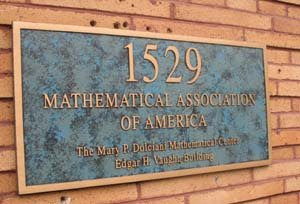Learning: More
New Link
http://ocw.mit.edu/OcwWeb/Literature/21L-472Fall-2008/CourseHome/index.htm
Course Description:
"This subject traces the history of the European novel by studying texts that have been influential in connection with two interrelated ideas. (1) When serious fiction deals with matters of great consequence, it should not deal with the actions of persons of consequence — kings, princes, high elected officials and the like — but rather with the lives of apparently ordinary people and the everyday details of their social ambitions and desires. To use a phrase of Balzac's, serious fiction deals with "what happens everywhere". (2) This idea sometimes goes with another: that the most significant representations of the human condition are those dealing with persons who try to compel society to accept them as its destined agent, despite their absence of high birth or inheritance."
"The readings begin for the sake of contrast with a comic representation of this second idea, Part One of Cervantes's masterpiece, Don Quixote, which pokes fun at the idea that one can elect oneself as a person of destiny and which also introduces into narrative fiction a quality with which later novels will be much occupied — a kind of teasing inquiry into the various devices by which narratives tends to endow characters with importance. We then turn to serious representations of the idea in nineteenth century fiction: Balzac's Old Goriot, Stendhal's The Red and the Black, Flaubert's Madame Bovary, Dostoyevsky's Crime and Punishment, and Tolstoy's Anna Karenina."
Article
Joan L. Cannon, To Write a Paragraph: It was a small, special class of senior boys with an assortment of various handicaps, none physical, taking place at the end of a school year. I seriously questioned what in the world I was doing there
Number A Day
Having studiously (no pun intended) avoided all things mathematical, I found this site intriguing. Perhaps my fear of understanding was overcome by the possibility that in subscribing to this site, I might overcome my aversion.
Some recent posts from a site sponsored by the Mathematical Association of America’s NumberADay blog. "Every working day, we post a number and offer a selection of that number’s properties."
529
When it comes to genuine computation, however, to seeing a self-important number like 529 and panicking when you divide it into 2,200, or realizing that, hey, it’s the square of 23! well, that calls for a very different number system, one that is specific, symbolic and highly abstract.—Natalie Angier, New York Times, Sept. 15, 2008
11 185 272
The number of decimal digits in the 46th known Mersenne prime, discovered on Sept. 6, 2008, by Hans-Michael Elvenich in Germany, a participant in the Great Internet Mersenne Prime Search.
54
54 is the smallest number that can be written as the sum of 3 squares in 3 ways: 12 + 22 + 72 = 22 + 52 + 52 = 32 + 32 + 62 = 54.

The number of colored squares on a Rubik’s cube.
And just who was Mary P. Dolciani, the person for whom the The Mary P. Dolciani Mathematics Learning Center is named and that houses the Mathematical Association:

"If I were limited to just one word to describe Dr. Mary Patricia Dolciani, that word would be "enthusiastic". [She had] enthusiasm for her discipline of mathematics, for teaching, for writing, for research, and for life — an enthusiasm that was evident when she spoke and that jumped off every page of her textbooks...
Having received her PhD from Cornell University where she was a Erastus Brooks fellow and an Olmsted fellow, she pursued further study at Oxford University in England and at the Institute for Advanced Studies at Princeton. She also worked for the US Government on classified projects at Fort Monmouth during World War II.
But Mary was probably most at home in the classroom, where she was a "Master Teacher". In her forty-two years of teaching, two at Vassar College and forty at her alma mater, Hunter College, Professor Dolciani was both a teacher of undergraduate students and a teacher of teachers. She developed the first multi-media mathematics learning laboratory in the City University system, a laboratory which is still thriving today. She directed many National Science Foundation institutes and New York State Education Department institutes for mathematics teachers. A very active member of the School Mathematics Study Group, Professor Dolciani took the lead in developing new curricula for secondary school mathematics."
The UChannel
The following describes the services offered by this project, an initiative of Princeton University's Woodrow Wilson School of Public and International Affairs from their site:
The UChannel (also known as the University Channel) makes videos of academic lectures and events from all over the world available to the public. It is a place where academics can air their ideas and present research in a full-length, uncut format. Contributors with greater video production capabilities can submit original productions.
The UChannel presents ideas in a way commercial news or public affairs programming cannot. Because it is neither constrained by time nor dependent upon commercial feedback, the UChannel's video content can be broad and flexible enough to cover the full gamut of academic investigation.
Here is a selection of recent offerings:
Cynthia Enloe, director of the Women`s Studies Department at Clark University: Women and Men in the Iraq War: What Can Feminist Curiosity Reveal?
* United States Senator Tom Harkin (D-IA) discussing the 2008 election (University of Texas at Austin, LBJ School of Public Affairs)
* Israel-Palestine: Why Today`s Crisis is Rooted in the Denials of Yesterday, a lecture by Sylvain Cypel, Editor in Chief of Le Monde (Princeton University, Woodrow Wilson School of Public and International Affairs)
* Pearls, Politics, and Power: How Women Can Win and Lead, by Madeleine M. Kunin, Marsh Scholar Professor-at-Large at the University of Vermont (Middlebury College, Rohatyn Center for International Affairs)
* Global Warming and Climate Change, a keynote address by Nobel Laureate chemist Sherwood Rowland, Ph.D., at the Colby Institute for Leadership (Colby College, Goldfarb Center for Public Affairs and Civic Engagement)
* Memorial Mania: Issues of Commemoration and Affect in Contemporary America, a lecture by Erika Doss, Professor of Art and Art History at the University of Colorado (Dickinson College, The Clarke Forum for Contemporary Issues)
* The Bin Ladens, a talk by Steve Coll, author of The Bin Ladens: The Story of a Family and its Fortune (London School of Economics and Political Science)
The presentations are in a variety of formats — mp3 audio, mp4 video, and several flavors of streaming audio and video. Member institutions can access broadcast quality mpeg2 video. UChannel also “provides free quality programming to TV operations that serve the public interest.”
Resource Shelf, a favorite source for new sites, has singled out this resource for particular commendation:
Provides that when a criminal sexual offense is committed or alleged to have been committed by a school district employee or any individual contractually employed by a school district, that criminal history record information must be provided to the superintendent of the school district immediately upon request. http://www.ilga.gov/legislation/95/HB/PDF/09500HB3512lv.pdf
Title: H.B. 3512








